Why is THIS Florida city a ‘safe haven’ from hurricanes while others in the state struggle to insure their storm-battered properties?
In the wake of Hurricane Idalia’s damage to Florida, residents of the city of Ocala remain grateful that their area remains a relative “safe haven” despite the Sunshine State’s stormy weather.
Although the hurricane caused significant damage and led to at least seven direct deaths in late August, experts warned that the damage could have been much worse.
In Tallahassee, home to about 200,000 people, Florida State University and Gov. Ron DeSantis’ mansion — which was hit by a falling tree during the storm — saw significant damage but were spared the eye of the storm.
However, Ocala – located in the center of the state – is considered one of the state’s lowest risks for coastal flooding in a state that bears 40 percent of the nation’s direct impacts from hurricanes.
Additionally, only Lake City and Tallahassee are at lower risk of high winds, droughts and inland flooding in the state, according to Climate Alpha, which uses analytics to predict climate volatility.
In the wake of Hurricane Idalia’s damage to Florida, residents of the city of Ocala remain grateful that their area remains a relative “safe haven” despite the Sunshine State’s stormy weather
While Hurricane Irma hit the region quite hard in 2017, residents say the Wall Street Journal that the powerful storms lose strength by the time they reach Ocala, which is 100 feet above sea level.
Even as there were concerns that Hurricane Idalia would hit Ocala, the city suffered no major damage and only minor power outages, which were quickly restored.
The city and its surrounding areas also have lower housing costs and, perhaps most importantly, lower insurance premiums at a time when some insurance companies are refusing to operate in the state.
Marion County, home to Ocala, had an average insurance premium of $1,894 per year, the second lowest in the state behind neighboring Sumter County.
By comparison, on the Florida Keys in Monroe County, you’ll pay $7,584 in insurance premiums.
Premiums are nearly as high in other trendy areas, including Palm Beach ($5,710 per year), Broward ($5,519) and Miami Dade ($5,665).
Home prices also make the area attractive, with the average luxury home costing an average of $710,000, while Tampa costs $1.5 million and other areas in the state cost more than $3 million.
“People want to find an easier life,” where they don’t want to have to deal with the storms all the time, said Ocala House Properties broker Matt Varney.
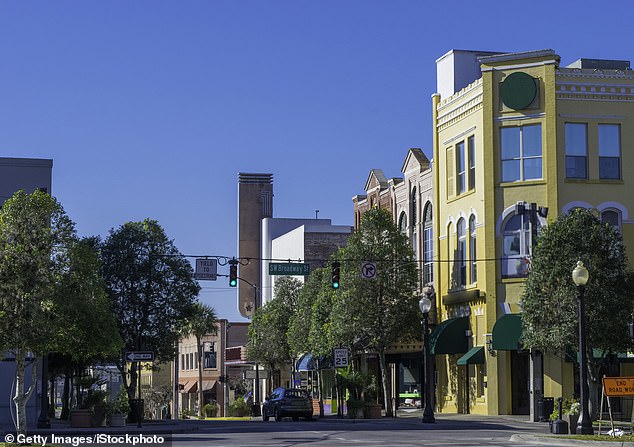
Ocala – located in the center of the state – is considered one of the state’s lowest risks for coastal flooding in a state that receives 40 percent of the nation’s direct impacts from hurricanes
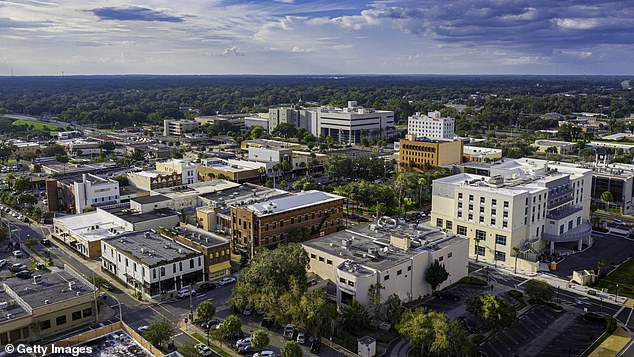
While Hurricane Irma hit the region pretty hard in 2017, residents tell the Wall Street Journal that the powerful storms lose strength by the time they reach Ocala, which is 100 feet above sea level.

While some may have been relieved when Idalia made landfall with less force than once feared, the consequences for thousands of people were severe as damage extended across much of the state’s west coast and into Georgia and South Carolina.
After slowing before reaching the coast, the National Weather Service tracked the storm as it moved forward at 20 mph, a surprisingly faster-than-average speed that meteorologists say may have been either a good or a bad side effect.
The speed caused the storm to move through certain areas quite quickly, which limited some of the damage, but it also allowed the storm to maintain its momentum and continue on its path.
Idalia’s strength and large radius allowed the storm to reach much of Florida before hitting Georgia and the Carolinas, with the tornado still causing damage Thursday as storm surges were observed in North Carolina.
In Ocala – which was forecast to have a major impact – much of the storm was avoided, with six shelters in use for only about half a day and reserved for only the essentials.
The shelters were all primary schools, all of which could reopen the next day, according to the newspaper Ocala Star Banner.
The devastation elsewhere also prompted President Joe Biden to formally declare a major disaster, allowing the White House to funnel federal funds to affected areas.
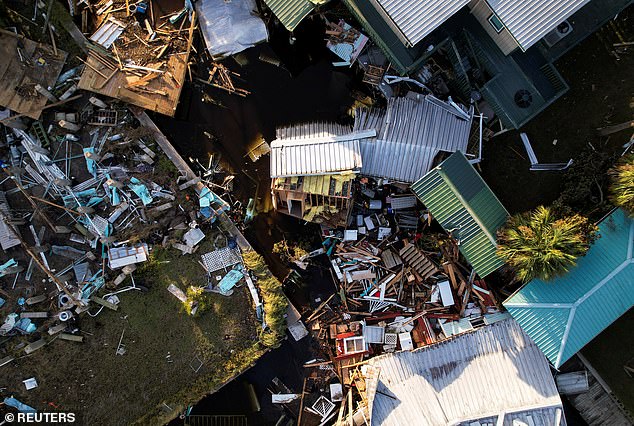
The hurricane, which made landfall Wednesday morning, is expected to have caused billions of dollars in damage
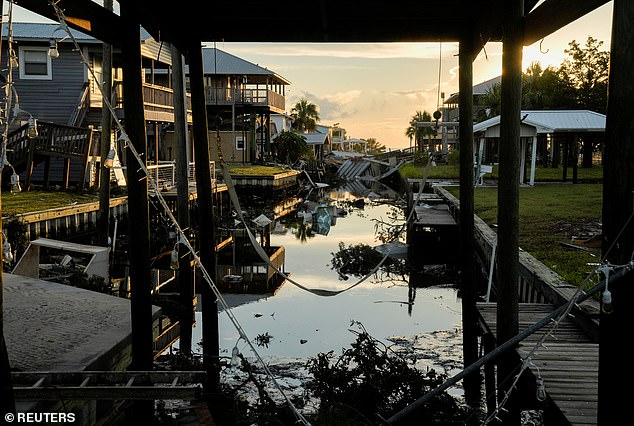
The force of the storm caused damage to extend from the west coast of Florida (photo in Horseshoe Beach, Florida) to North Carolina.
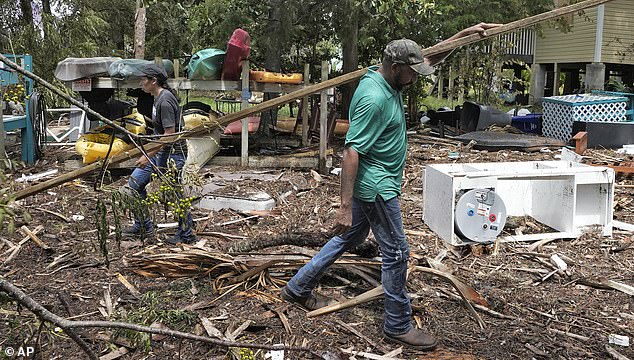
Entire towns were leveled by the hurricane, while residents of Cedar Key, Florida (pictured) were tasked with removing tornado debris
“The President’s action makes federal funding available to affected individuals in Citrus, Dixie, Hamilton, Lafayette, Levy, Suwannee and Taylor counties,” the White House said in a statement.
The storm brought strong winds to Savannah, Georgia, as it headed toward the Carolinas and was expected to move along the coast before entering the Atlantic Ocean.
The National Weather Service said Idalia spawned a tornado that touched down briefly in Charleston, South Carolina, where two people suffered minor injuries when winds sent a car flying.
